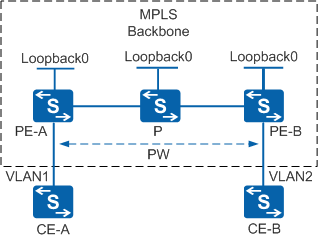LSP Trace Test
The NQA LSP trace test detects the forwarding paths of LDP LSPs or TE LSPs and collects statistics about each device along a forwarding path.
Figure 1 shows the process of an LSP trace test:
The source (PE-A) constructs an MPLS Echo Request packet whose destination IP field is an IP address on the 127.0.0.0/8 block. The source then searches for the corresponding LSP. For a TE LSP, the packet can be sent from a tunnel interface and then forwarded along a specified CR-LSP.
The MPLS Echo Request packet should contain the downstream mapping type-length-value (TLV) that carries LSP downstream information on the current node, including next-hop IP address and outbound label. The TTL of the first MPLS Echo Request packet is 1.
The MPLS Echo Request packet is forwarded through the specified LSP in the MPLS domain. When the first hop of the LSP receives the packet, its TTL decreases to 0 and it times out. The first hop then returns an MPLS Echo Reply packet.
The source continues to send MPLS Echo Request packets, with the TTL increasing by 1 each time. This process is repeated until all the LSRs along the LSP have returned their responses.
- According to the MPLS Echo Reply packet received from each hop, the source obtains the LSP forwarding path from the source to the destination and collects statistics about each device along the forwarding path.
The LSP trace test results and historical records are collected in test instances. You can run commands to view the test results and historical records.
